Have you ever been annoyed with your cell phone because the battery suddenly no longer held a charge? Or with your washing machine that really wasn’t old enough for it to already stop working? Could manufacturers actually intend for their products to stop working prematurely? In this blog post, we explore this highly relevant topic.
The term “planned obsolescence” refers to entire products or parts of products being of inferior quality so that they deliberately age faster than expected. This might be a mechanism that could be expected to suffer damage fairly early on. It could also be a predetermined breaking point or a feature that has been programmed to stop working prematurely. Planned obsolescence also occurs when technology becomes obsolete too quickly, a device is no longer compatible with other systems after just a few years, or repairs are no longer worthwhile or not even possible in the first place. The boundary between these different categories is fluid, meaning they can overlap. The three main types are outlined below.

Types of Obsolescence
Material Obsolescence
A device’s useful life can be influenced by the quality of its materials and technical components. We speak of material obsolescence when a device is no longer functional because one of its components fails and can no longer be repaired – or when it is no longer available as a spare part. A good example of a component wearing out prematurely is the non-removable battery in a cell phone, which rapidly loses its ability to hold a charge after two years. Another are printers that stop working as soon as the warranty expires. Many devices could theoretically still be repaired, but the costs are so high that in reality, it’s simply more cost-effective to buy a new one.

Functional Obsolescence
If a manufacturer stops updating the software for a device, it often becomes unusable. This is the case when you want to use a fully functional printer with a new operating system but discover that there isn’t a compatible driver available – the printer simply won’t respond when connected. But an operating system itself can also become unusable if the manufacturer stops releasing security updates for it.
New versions of software or apps often render the old ones useless. Sometimes, however, the formats of two different software versions aren’t compatible with each other, so users are forced to choose the newer one.
A technological leap is also an example of functional obsolescence. Apple, for example, introduced what it called FireWire ports in its computers in contrast to conventional USB ports. They didn’t remain standard for long, however – they were replaced soon after by Thunderbolt ports. As a result, not only did users have to replace cables, but they were also forced to purchase completely new devices that were compatible with the new ports.

Psychological Obsolescence
When it comes to this kind of obsolescence, we as buyers play a role – we decide that we simply have to have the latest hot product that just hit the market, like a new cell phone.
Many can’t stop themselves from getting pulled in, and not just because they like to try out new things and enjoy the variety. There’s often also peer pressure involved, because anyone who has an old smartphone isn’t keeping up with the times, is out, and sometimes isn’t accepted by those around them – as is often the case with teenagers or young adults. And yet the new device only has a few additional features and is only marginally more stylish than its predecessor. Nevertheless, it makes us feel like we’re cool and that we belong.

Apple is known for strumming the strings of psychological obsolescence more masterfully than any other company. Everyone is familiar with the downright hype around its new devices. In this context, one of its particularly clever tricks is always changing the colors of its smartphones and other devices, making older models recognizable to enthusiasts at first glance.
Examples That May Sound Familiar
Yikes, What Happened to the Speaker?
Maybe you have an electronic device at home with what is known as a soft-touch surface, for example on a stereo, speaker, camera, or remote control. After some time, these surfaces made of soft plastic start to become sticky, attracting dust and pet hair. This makes them disgusting to touch, which is why they often end up in the trash prematurely. This annoying feature is probably due to the plasticizers in the material, which evaporate over time.
I’ll Never Buy Anything From That Brand Again
Or maybe you once owned a flat screen TV that unfortunately only lasted a few years. Modern televisions often have sensitive components such as capacitors located near power components that radiate a lot of heat. They can’t withstand this heat for long and at some point stop working as a result. In this case as well, spare parts are often not available on the open market. This means the TV would need to be repaired professionally, which would cost a lot – even though the component itself is very cheap.
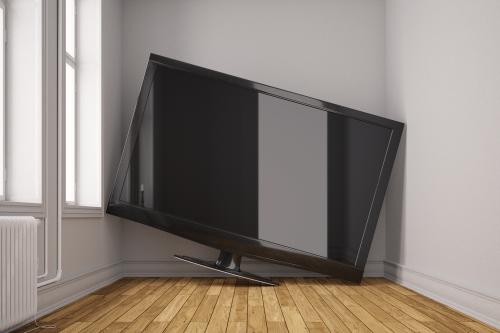
The German consumer organization Stiftung Warentest reported on one particularly spectacular case – a consumer’s TV simply stopped working after three years. This was indeed very early, but the man initially thought it shouldn’t be much of problem, so he contacted Philips to order the defective spare part. The thing was that this part was simply no longer available, as he was told by the company. Which was too bad, because he paid almost three thousand euros for the device. All that remained was for him to scrap the expensive unit – and even pay for the resulting disposal costs. The retiree, whose trust in the company had been shattered, vowed “never buy a product from that brand again.”
Bye-Bye, Battery
Whether in smartphones, electric toothbrushes, or notebooks, rechargeable batteries don’t last forever. In a cell phone, they last for about 500 charging cycles, to be precise. That equates to around two years. This means that the batteries wear out exactly when your cell phone contract is up. Coincidence?
But even that wouldn’t be such a big deal in and of itself – if only you could replace them yourself, as was the case in the past. Nowadays, replacing a battery is expensive and simply not worth it. Where do the devices end up afterwards? I’m sure you can guess.
I’m Never Printing Anything Again!
At some point, usually when you least expect it, your printer will go on strike despite working perfectly the day before. In many cases, this is due to protection counters – they keep the device from printing more than a certain number of pages, even though it is technically still fully functional.
And What Else?
Cameras often use plastic gears that wear out much faster than those made of other materials, which would be much more durable and only slightly more expensive.
Shoes are often designed with plastic soles that wear out quickly. In this case, too, it would be easy for the manufacturer to replace them with a longer-lasting option. Repairing them is often not possible because the rest of the shoe is also of inferior quality. The situation with athletic shoes is even worse due to the fact that the soles are usually vulcanized, which makes it impossible to replace them right from the beginning.

Besides the battery, notebooks have other weak points, for example the fan. Dust accumulates here and needs to be cleaned out regularly – otherwise the device will overheat. Most users, however, are unfortunately unaware of this and also don’t receive any information about it. And even those that are aware of the problem and want to remedy it themselves often simply can’t because the fan isn’t accessible in the first place. Another possibility is that the BIOS battery is simply defective. This only costs about one euro, but if it’s dead it means that the notebook won’t start and will often be scrapped.
Even a German’s favorite possession, namely their car, no longer lasts as long as it used to. While the old W123 Mercedes kept going and going and going, today’s cars break down quickly and aren’t as easy to repair yourself. Incidentally, old Benzes can often still be found on the road, for example in Africa, where people are only too happy to use them as taxis – and they even run on canola oil or old deep-frying fat as an alternative to motor oil.

Ever suddenly had the handle of the freezer door or the washing machine come off in your hand after opening it, even though you’re not a violent person? Door handles on electronic devices are often a weak point. In the event of a defect, you may not have to replace the entire unit, but you’ll often have to replace the entire door. This usually costs much more than the door handle is worth. Sometimes, however, the newly purchased freezer door fails to seal, causing ice to form inside. Here you’re faced with a choice – either accept the wasted energy or just upgrade to a whole new fridge altogether. And then just make sure you don’t open the door so forcefully. Easy, right?
Even toothpaste isn’t safe from planned obsolescence. From time to time, manufacturers make the openings of the tubes larger, so that more toothpaste comes out at once than consumers actually wanted. This phenomenon is known as consumption acceleration.
Is All of This Intentional?
Professor Albert Albers, head of the Institute for Product Development at the Karlsruhe Institute of Technology (IPEK) in Germany, confirms that products wearing out is, in a sense, planned. He explains that manufacturers do decide how long a product should last. They develop a usage scenario for specific customer groups and use this to determine how long the device will be used. Based on these calculations, designers select the device’s components under consideration of their material properties and performance – both of which are tailored to the predetermined service life. Often the goal is not to make the device as good as possible, but simply as good as necessary. Everything else just unnecessarily drives up costs.
Smartphone manufacturer HTC even confirmed this in a call from a customer, who was told by a customer service employee that the devices are designed for a usage cycle of two years. When Stiftung Warentest subsequently called the manufacturer, however, they would not officially confirm this statement.
Although Germany’s Federal Environment Agency also recognizes that manufacturers do determine a product’s service life in advance, it does not want to refer to this as planned obsolescence – which would be the case from the user’s point of view.
Growth, Ever-Increasing Growth
Increased consumption and thus the purchase of more and more new devices is giving production a boost and helping the economy grow and prosper. As a result, growth even occurs where it would no longer be possible under natural conditions, without planned obsolescence. Constantly shifting fads are fueling this trend. But so is our bargain-hunter mentality – there’s a deal lurking around every corner, and if you’ve snapped up a bargain, you feel good about yourself. This is true no matter how long the device ultimately lasts. The combination of these factors results in short-lived products. And this artificially created growth also has its benefits, of course, which we can’t be so quick to dismiss. Such as the fact that increased production creates jobs, for example. See what happens when you try to argue against that...

Conspiracy Theories
Devices with built-in expiration dates – that almost sounds like a conspiracy. Which, in fact, isn’t too far off. In 1924, for example, leading light bulb manufacturers formed the Phoebus cartel. They colluded with each other to reduce the lifetime of all lightbulbs from 2,500 to 1,000 hours.
Six years later, politicians and economists were talking about using planned obsolescence to overcome the economic depression in the United States.
But it remains difficult to prove that manufacturers deliberately design devices in this way in order to deceive consumers.
Shorter Initial Useful Life
In 2016, an obsolescence study was conducted on behalf of Germany’s Federal Environment Agency. The study found that the initial useful life of televisions, in particular, but also of washing machines, dryers, and refrigerators, has fallen compared to the past. The products no longer last as long as they did in the days of our parents or grandparents. Particularly washing machines, dryers, and refrigerators often break within five years and need to be replaced.
Nevertheless, the study did not come to the conclusion that the shorter product life was due to built-in defects.
What’s the Legal Situation?
Stefan Schridde, founder of the association “Murks? Nein danke!” (loosely translated as “A Botch Job? No Thanks!”) and author of the book of the same name, says that in most cases, deliberate inaction is at play. Thanks to today’s technology, most products could remain in use for decades, even centuries. Nevertheless, it is difficult to prove that the industry deliberately designs products across a variety of categories to wear out prematurely. Although obsolescence boosts sales and significantly improves companies’ bottom lines, the practice is not punished in Germany, even though it actually harms every consumer.

It is true that it would theoretically be possible to accuse the manufacturers of property damage. This is because property damage also includes rendering objects unusable. The issue is that you would have to prove that they acted with intent. This would be the case, for example, if chips sensitive to heat were positioned inside a device in a spot that gets particularly hot, despite just as easily having been installed somewhere with a cooler temperature. Or if the manufacturer decided not to use heat-resistant chips at all, despite them being in the same price range.
For Stiftung Warentest to be able to test the wear and tear a washing machine experiences over ten years, however, it would have to continuously run the appliance at its test center for nine months. The time, effort, and cost involved would be immense. Stiftung Warentest does not generally conduct endurance tests on televisions, smartphones, notebooks, etc., because they would take about a year and a half. After completing the tests, some of the devices would no longer even be on the market – successor models would have been released long before that.
Now That’s the Ticket!
As part of its Energy Transition for Green Growth Act, France has made planned obsolescence a criminal offense. The law has been in effect since 2015 and is intended to curb overproduction and overconsumption. It includes penalties of up to two years in prison and fines of 300,000 euros or even five percent of a company’s annual revenues.
The law makes it illegal, for example, to install plastic O-rings in equipment when metal ones could just as easily have been used. In addition, companies are required to disclose whether spare parts for a particular product are available at all. In addition, products that can no longer be repaired are taboo in France.

Furthermore, companies are prohibited from disposing of unsold goods – they must be offered for sale again. In Germany, this was different until recently – here, returned goods often ended up in the trash for financial reasons.
The French law was primarily designed to send a signal to manufacturers, because it is obviously difficult to prove planned obsolescence in that country as well. There, too, companies argue that competitive pressure makes it necessary to resort to cheaper components. And there, too, they like put forth the “job creation” argument.
Nevertheless, the organization “Halte à l’Obsolescence Programmée” (abbreviated HOP in French and roughly meaning “Stop Planned Obsolescence”) has already achieved quite a bit. For one thing, it filed a lawsuit against Apple over the iPhone 6, 6S, SE, and 7 models, which became slower over time and had other functional flaws. Since the slowdown coincided with the release of the new iPhone 8 and X models, many users opted to upgrade to the newer devices. HOP won the case and Apple was ordered to pay a 25-million-euro fine.

The consumer advocacy group has also filed suit against printer manufacturer Epson. This is due to the fact that the company’s printers indicate that the ink cartridges are empty even though they are still 20 to 50 percent full. The outcome of this lawsuit remains to be seen.
What about the Environment?
Apart from the fact that planned obsolescence harms consumers financially, it also has significant negative consequences for our environment and society. Not only does it contribute to environmental pollution and increase the global trash crisis – it also wastes raw materials and energy. There are also social impacts – in order to manufacture products ever faster and more cheaply, many companies outsource their production to low-wage countries where catastrophic working conditions are the norm.

So What Can Be Done?
Even though French consumer protection organizations have won an initial victory – planned obsolescence is no longer just a civil matter in the country but is instead considered fraud and can have criminal consequences – they haven’t yet reached the end of their demands. They are seeking to extend the mandatory warranty period to ten years as well as to obligate manufacturers to make spare parts available. German consumer watchdogs are also committed to putting an end to this artificially created demand in the market. After all, the effects are not really socially equitable. On the one hand, people with lower incomes cannot afford good quality products and therefore purchase cheap goods. This means they are penalized twice over, since the devices also don’t last long and have to be repurchased soon after.
Consumer advocacy groups are also calling for manufacturers to make the useful life of devices more transparent so that potential buyers can take this into account when making purchasing decisions. Up until now, there’s been a complete lack of transparency in this regard.
In order to make planned obsolescence itself obsolete, on the other hand, we need to completely shift our way of thinking and move from the current economic model to a circular economy. This is exactly what the aforementioned association “Murks? Nein danke!” is working to achieve, among other organizations. Its proposed model involves the limited manufacture of high-quality goods produced locally while taking environmental considerations into account. This form of functional, social, and solidary collaboration would create new jobs, for example in the fields of repair, recycling, sustainability, and in the service sector.

Rethinking Traditional Models
Not all innovative approaches lead in the right direction, however. It goes without saying that you shouldn’t replace your cell phone with a new one every few months. On the other hand, real innovations can also result in real improvements. An e-book reader can theoretically hold thousands of books, for example, which not only saves shelf space but also eliminates the need for bookworms to lug around their extensive vacation reading.
Another trend – smart devices – should also be viewed with a certain degree of skepticism. Although a fridge with a Wi-Fi connection, a touchscreen, and a built-in camera is a genuine improvement and makes life easier, all of these elements are exactly what shortens the appliance’s useful life. While the refrigerator itself might last a good 15 years, this is certainly not the case with cutting-edge hardware, as IT components simply don’t last that long. In other words, connecting household appliances to the Internet of Things isn’t without its own share of problems.
Laundry Service
Professor Michael Braungart, who heads the company EPEA International Environmental Research, suggests that manufacturers sell not just the equipment, but the service associated with it. In the case of a washing machine, this would be the laundry service, which also includes the repair, replacement, and recycling of the appliance. This would ensure that manufacturers, in their own interest, do everything they can to create a high-quality product so that they don’t have to repair it frequently or replace it prematurely. They would also make sure the products were easy to recycle to avoid high disposal costs. All this would make the product cheaper in the end. This “cradle to cradle” approach, as Braungart calls it, would benefit all involved – including the environment.
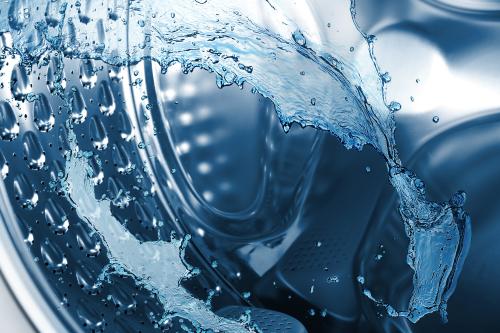
Urgent Measures
It will surely take some time for such a shift in mindset to occur. But what can you do between now and then to avoid becoming a victim of planned obsolescence?
First of all, you shouldn’t buy cheap goods. This is because what you’ve already guessed is really true – cheap products don’t last as long as high-priced ones. In many cases, it pays to pay more. Many companies often offer business versions of IT devices for professional users that feature better workmanship overall. This is also the case with kitchen appliances and tools – there are versions available that specifically meet the needs of companies in the hospitality sector or professional contractors.
The tool manufacturer Bosch, for example, sells two product lines: green for DIY enthusiasts and blue for professionals. Bosch also offered entry-level models under the Skil brand before selling the company in 2016. This meant users had a choice – if they only planned to use the tool every now and then, an inexpensive Skil model was sufficient. If they were a DIYer, they could select the green version. And if they planned to use the tool on a regular basis, the blue model was the best choice.
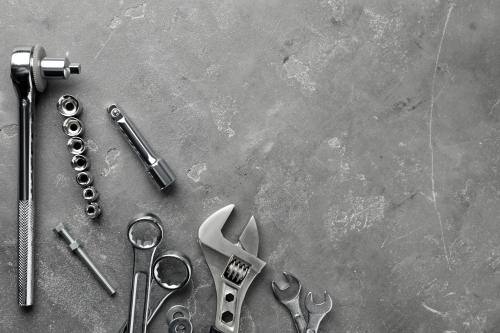
As usual, of course, there are exceptions that prove the rule. Unfortunately, expensive devices come along from time to time that aren’t any good. Furthermore, don’t trick yourself into believing that you’re always on the safe side with a product from a long-established German company. A number of renowned companies have long since ceased to exist – in some cases, only the license to the name is still in circulation, meaning that you can now also find the odd cheap product bearing a well-known brand name.
When shopping online, you should pay attention to reviews and specifically read the reviews with only a few stars. If different people repeatedly mention the same shortcomings, pick a different product. Reputable consumer portals also provide information on which devices wear out or break quickly. You could also specifically look for products with the HTV-Life® quality mark – this is only granted to devices that do not suffer from planned obsolescence.
In any case, the best rule of thumb is to make it or fix it yourself!
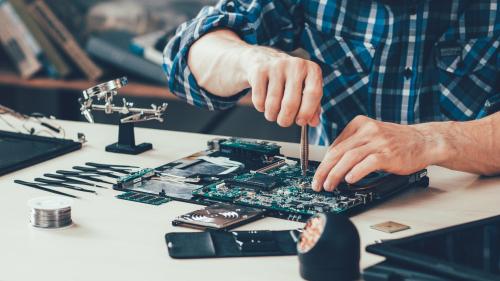
And by the way, you can use acetone-free nail polish remover to clean up those disgusting, sticky surfaces. Stubborn printers, on the other hand, can be reset so that they work again like they did on day one – you can find instructions on how to do this on the Internet, for example on the iFixit website for do-it-yourself repairs.
QUADRO Says No to Planned Obsolescence
QUADRO has never designed products to wear out prematurely – and we never will. Our tubes, panels, and connectors are strong enough to withstand generations of children climbing, jumping, and playing happily; they’re virtually indestructible.

The additional fabric components are easy to clean (simply toss them into the washing machine) and are designed to last as long as is technically possible.
QUADRO Is Environmentally Friendly
QUADRO is made of only two eco-friendly materials: PP (polypropylene, recycling code 5) and HDPE (high-density polyethylene, recycling code 2). Both plastics are considered safe, non-toxic, and environmentally friendly, and are therefore also used for food packaging. Polypropylene is one of the most neutral plastics because it has only two components: carbon and hydrogen.
QUADRO Is Safe
We designed QUADRO to even surpass the European safety standards for toys. You can find an overview of the safety certificates we have been awarded here. And it goes without saying that all of our products are also free of harmful substances such as PVC, BPA, PAHs, phthalates, and lead.
Compatibility
During the further development of QUADRO, we’ve deliberately ensured that the newer components remain compatible with the very early ones. This means you are free to combine sets from the 1980s – or even the original sets from 1979 – with today’s kits and expansion sets. Once your children eventually outgrow QUADRO, the next generation is sure to enjoy it.
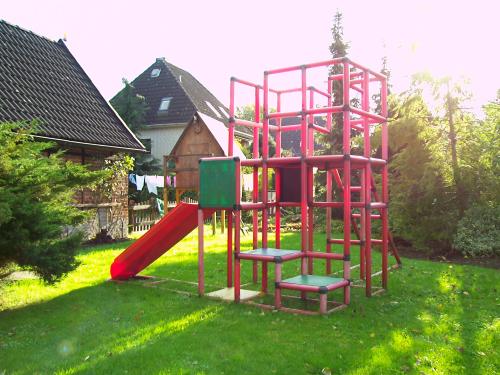
In addition, each kit can be put together in countless exciting ways. Search our model database (MDB) for inspiration or use your imagination to build your own structure. This ensures that your children always have new ways to play – a surefire solution to keep boredom at bay.
UV Protection
To ensure that the colors remain vibrant for a long time, all QUADRO parts are dyed using a special process and feature UV protection. This means they last much longer than standard plastic parts – so you don’t have to worry about leaving them outside during the winter. But if you know that your kids won’t be using a kit for a long time, it’s a good idea to disassemble it, check to make sure you have all the pieces, clean it, and then put it in storage – that way it will remain as good as new for a long time.
Protection against Chlorine and Salt Water
Last but not least, your QUADRO kit is highly resistant to acids, bases, salt, and alkalis, so you can safely place the structure in the pool when you add a slide, for example. Grease and dirt are also no match for QUADRO. The parts can easily be cleaned with household cleaners, so you can bring your structure in from outside in the winter and set it up again in your child’s room.
And because we’re so confident in the quality of what we’ve created, all QUADRO tubes, panels, connectors, bolts, and wrenches come with a 6-year warranty!
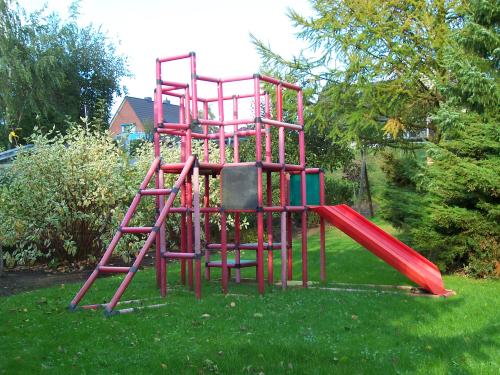
Sources
- Andreas Winterer. Geplante Obsoleszenz: 17 Tipps gegen den gewollten Verschleiss. Utopia, 21.01.2017
- Geplante Obsoleszenz: So trickst Apple. Utopia, 09.02.2016
- Alexander Dallmus. Kurze Lebensdauer von Elektrogeräten: Gibt es „geplante Obsoleszenz“? BR, Bayern 1, 27.07.2021
- Faktencheck Obsoleszenz. Gemeinsame Pressemitteilung von Umweltbundesamt und Öko-Institut e. V. Umwelt-Bundesamt, 01.03.2015
- Geplante Obsoleszenz: Gerade gekauft und schon wieder hin? Stiftung Warentest, 29.08.2013
- L’obsolescence programmée, c’est quoi ?
- Geplante Obsoleszenz. Wirtschaftslexikon, onpulson.
- Frankreich beschließt Gesetz gegen „geplanten Verschleiß“. Deutsche Welle, 22.10.2014
- Schon kaputt? Frankreich untersagt die „geplante Obsoleszenz“. eurojournalist, 20.08.2015
- Halte à l’Obsolescence Programmée
- Vincent Fagot. Obsolescence programmée : HOP réplique à Epson. Le Monde, 27.03.2018
- La plainte contre Epson déposée par HOP va-t-elle devenir obsolète ? Halte à l’obsolescence programmée
- Notebook lässt sich nicht starten. Bildschirm schwarz. Reparieren für 1 Euro. Tuhl Teim DE, 07.01.2020
- Katharina Schuler und Zacharias Zacharakis. Das Problem mit dem Wegwerfen. Zeit online, 11.06.2019
- Pulli gefällt nicht - ab in den Müll?! ZDFtivi, logo!, 12.02.2020
- Klebriger Kunststoff – Klebende Oberflächen säubern. Muttis Haushaltstipps
- Gegen den Igitt-Effekt: Klebrige Kunststoffoberflächen reinigen. Hausjournal
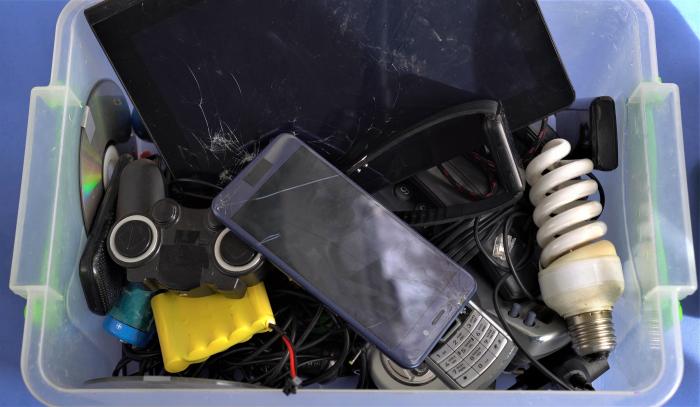
Comments